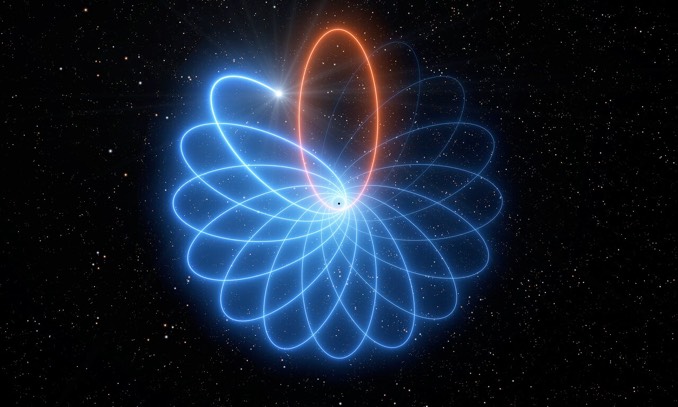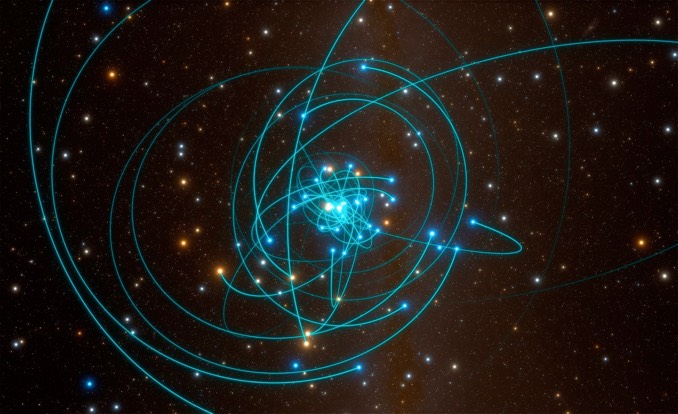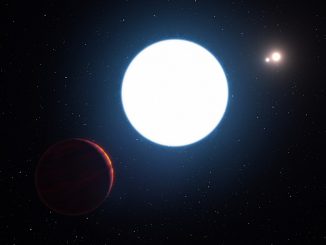
Astronomers monitoring the motion of a star whizzing around the Milky Way’s central black hole say its orbit is precessing as predicted by relativity theory, orbiting in rosette-like loops as the star’s point of closest approach changes with each trip around the hole.
The effect, known as Schwarzschild precession, was first detected with Mercury’s orbit, providing early evidence to support general relativity. But it has never before been measured for a star orbiting a supermassive black hole.
Einstein’s theory “predicts that bound orbits of one object around another are not closed, as in Newtonian gravity, but precess forwards in the plane of motion,” said Reinhard Genzel, director at the Max Planck Institute for Extraterrestrial Physics (MPE) and the leader of a team monitoring the star’s motion.
A century after Schwarzschild precession was observed in Mercury’s orbit, “we have now detected the same effect in the motion of a star orbiting the compact radio source Sagittarius A* at the centre of the Milky Way,” Genzel said. “This observational breakthrough strengthens the evidence that Sagittarius A* must be a supermassive black hole of four million times the mass of the Sun.”
The star in question, known as S2, passes within about 20 billion kilometres (12.4 billion miles) of Sgr A* and completes one orbit every 16 years. At closest approach, the star is moving at nearly 3 percent the speed of light.
“After following the star in its orbit for over two and a half decades, our exquisite measurements robustly detect S2’s Schwarzschild precession in its path around Sagittarius A*,” said Stefan Gillessen of the MPE, who led the analysis of the measurements published in the journal Astronomy & Astrophysics.

The study, based on more than 330 measurements, was carried out over the past 27 years using a variety of instruments with the European Southern Observatory’s Very Large Telescope in Chile’s Atacama Desert.
The same team reported in 2018 that light from S2 was stretched to longer wavelengths as the star passed close by Sgr A*, just as predicted by Einstein.
“Our previous result has shown that the light emitted from the star experiences general relativity. Now we have shown that the star itself senses the effects of general relativity,” said Paulo Garcia, a researcher at Portugal’s Centre for Astrophysics and Gravitation and one of the leaders of the research team.
When ESO’s gargantuan Extremely Large Telescope begins operations, much fainter stars may be found even closer to the central black hole. That could allow astronomers to determine its spin and mass, providing “a completely different level of testing relativity,” said Andreas Eckart, a project scientist with Cologne University.



